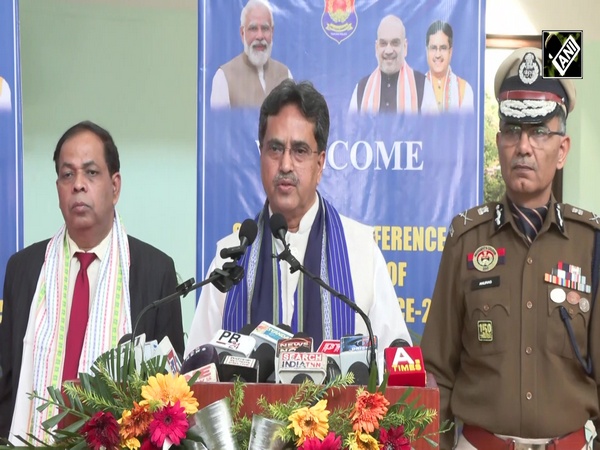More than 80% reduction in mortality rate in Thalassemia expected after Rapid Cardiac MRI: AIIMS
Nov 01, 2023

New Delhi [India], November 1 (ANI): Children suffering from thalassemia major and sickle cell anaemia require lifelong blood transfusion. These blood transfusions are life-saving, but this leads to problem of excess iron deposition in children suffering from these diseases. Excess iron in the body deposits in tissues and causes damage to organs like the liver, heart and pancreas, and increased iron content in thalassemia patients has a fatal effect on their heart.
"Iron accumulation in the heart is the main cause of cardiac dysfunction and death in thalassemia patients (50 to 70 per cent). In such a situation, it is necessary to detect this excess iron and treat it at the right time, while the cardiac dysfunction is still reversible. In this context, a rapid cardiac MRI method is being used in the Cardiovascular Radiology Department of AIIMS Hospital, Delhi. Through this special short MRI T2 sequence developed in the UK, it takes only 8 minutes to detect the amount of excess iron in thalassemia patients. Whereas generally, its investigation takes 40 to 45 minutes", Dr Priya Jagia, Professor and Head of the Cardiovascular Radiology Department of AIIMS Hospital, Delhi, said while speaking to ANI.
According to the Cardiovascular Radiology Department of AIIMS Hospital, the new sequence has been used in AIIMS Hospital, Delhi since the year 2018. Through this, not only the measurement of myocardial and liver iron is being done in thalassemia patients in a short time but also patients coming to AIIMS hospital in large numbers do not have to wait for long.
Prof Jagia explained that the use of T2 MR imaging in thalassemia patients has been part of the standard protocol in the UK since the early 2000s, and currently, the average life span of thalassemia major patients there is around 40 years, whereas in India it is only 25 years.
"In such a situation, if chelation therapy (treatment for removing extra iron) is given to thalassemia patients by detecting excess iron in their body at the right time, then their death by cardiac failure can be prevented. Traditionally used serum ferritin levels have been reported to perform poorly in many studies. This novel MRI sequence can measure the amount of iron in the heart muscle in just 8 minutes and if the chelation therapy is calibrated according to the iron measurement based on the MRI, then we can expect a reduction in mortality rates of more than 80%", said Prof Jagia.
Dr Jagia further said that after the detection of excess iron in the body at the right time, chelation therapy is given, by which the iron separates from the tissues and is excreted from the body. Detection of cardiac iron overload and subsequent intensification of chelation therapy can prevent cardiac dysfunction in thalassemia patients in time because it later becomes an important cause of death. With the utilization of this MR measurement to guide therapy and followup, the average life span of thalassemia patients or children is expected to increase, as evidenced already by the UK data.
"Along with this, MRI screening of thalassemia patients is being done completely free of cost at AIIMS Hospital, Delhi, as part of a collaborative project with University college of London ", she added. New strain sequence in MRI can pick up heart dysfunction as early as 2 years before the heart function starts reducing and this is where the change in chelation therapy can reverse this damage to heart.
Dr Jagia further said, "The added advantage of being able to this short 8 min MR scan is that more and more patients can get its benefit in a day. Also, a short MR sequence improves compliance for those hesitant to go in the MRI scanner. Recently, a mass screening program was conducted in which 117 patients who underwent rapid cardiac MRI at this department in 2 days, and 29% of these patients were found to have high iron levels, after which their chelation therapy was modified.
Thalassemia is a genetic blood disorder in which patients have defective haemoglobin, an important part of Red Blood Cells, which makes them prone to blood cell lysis thus requiring multiple transfusions. (ANI)


















